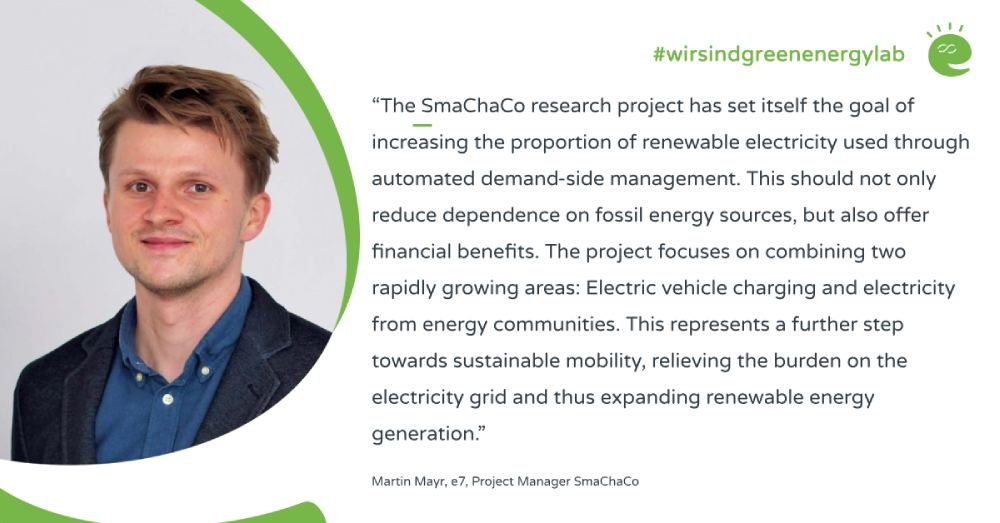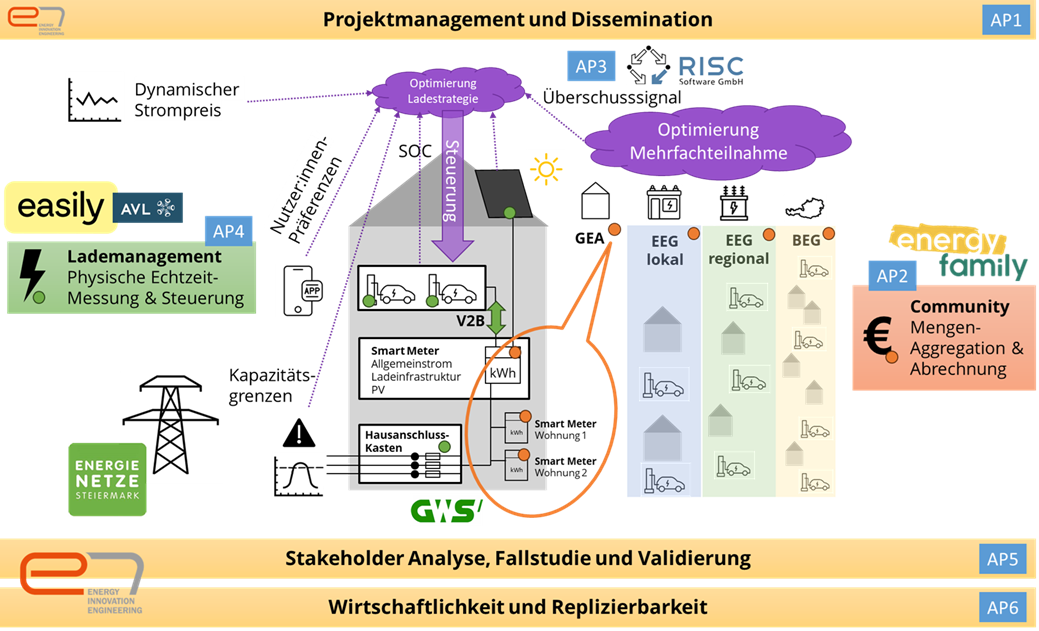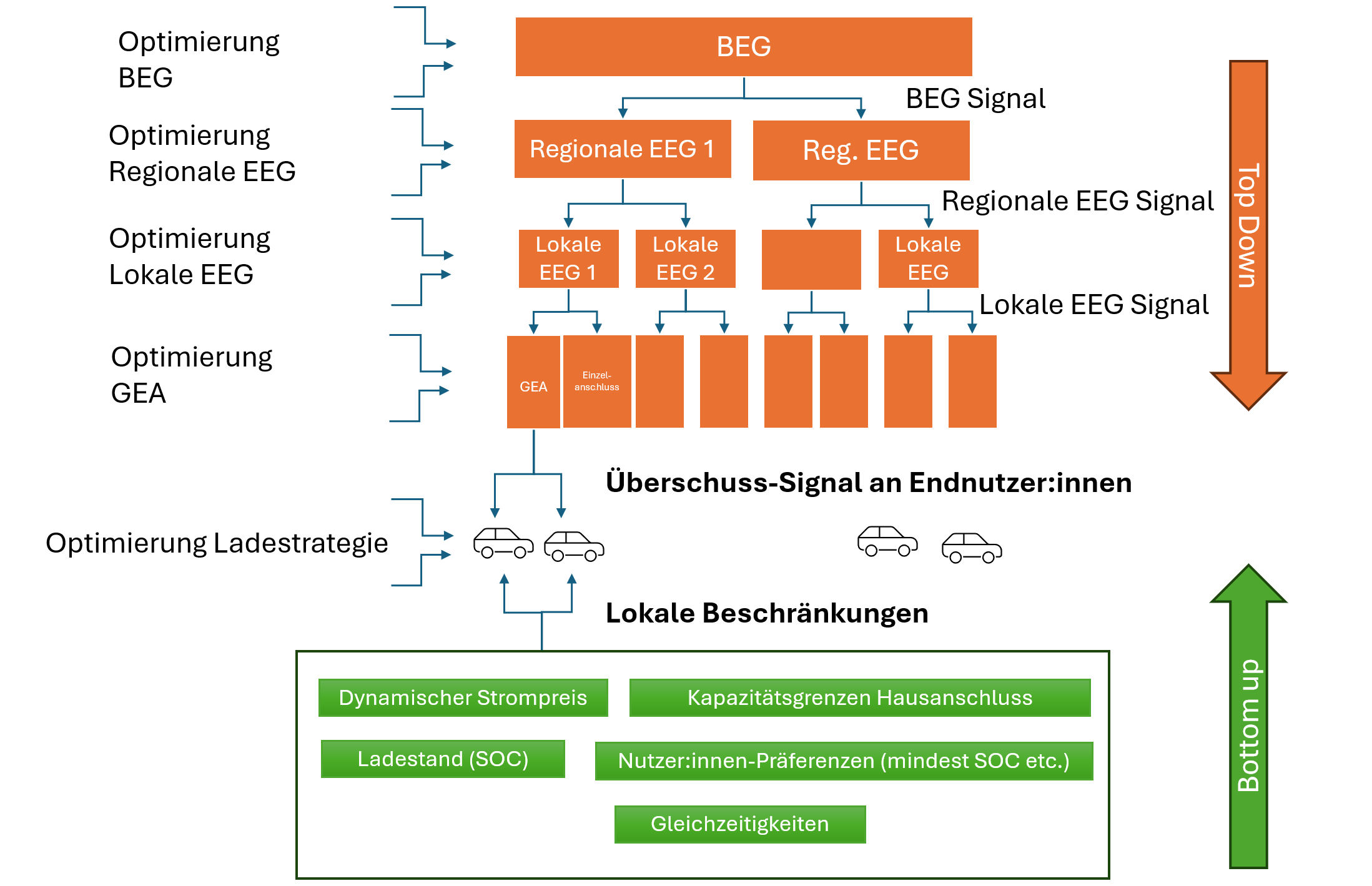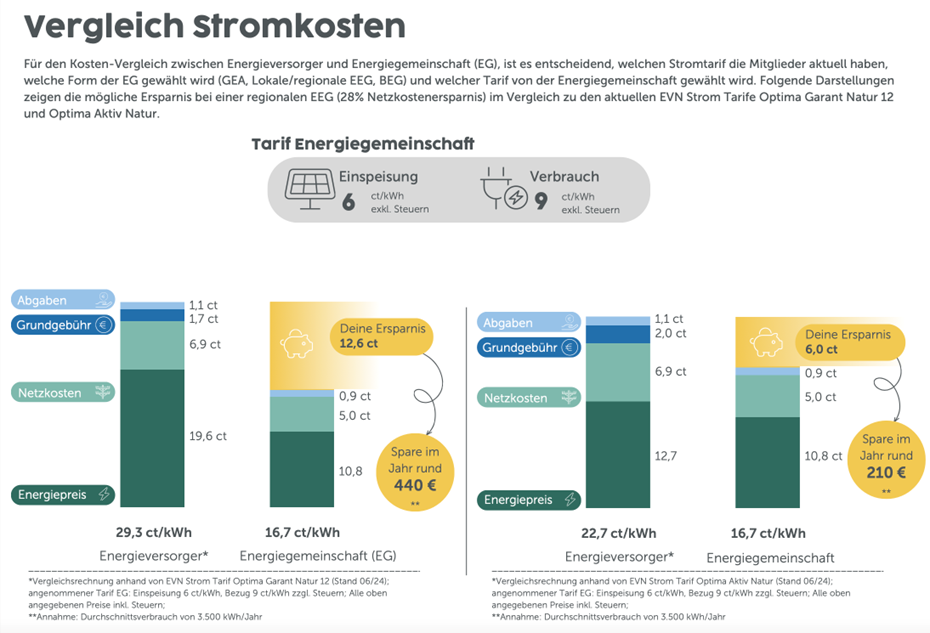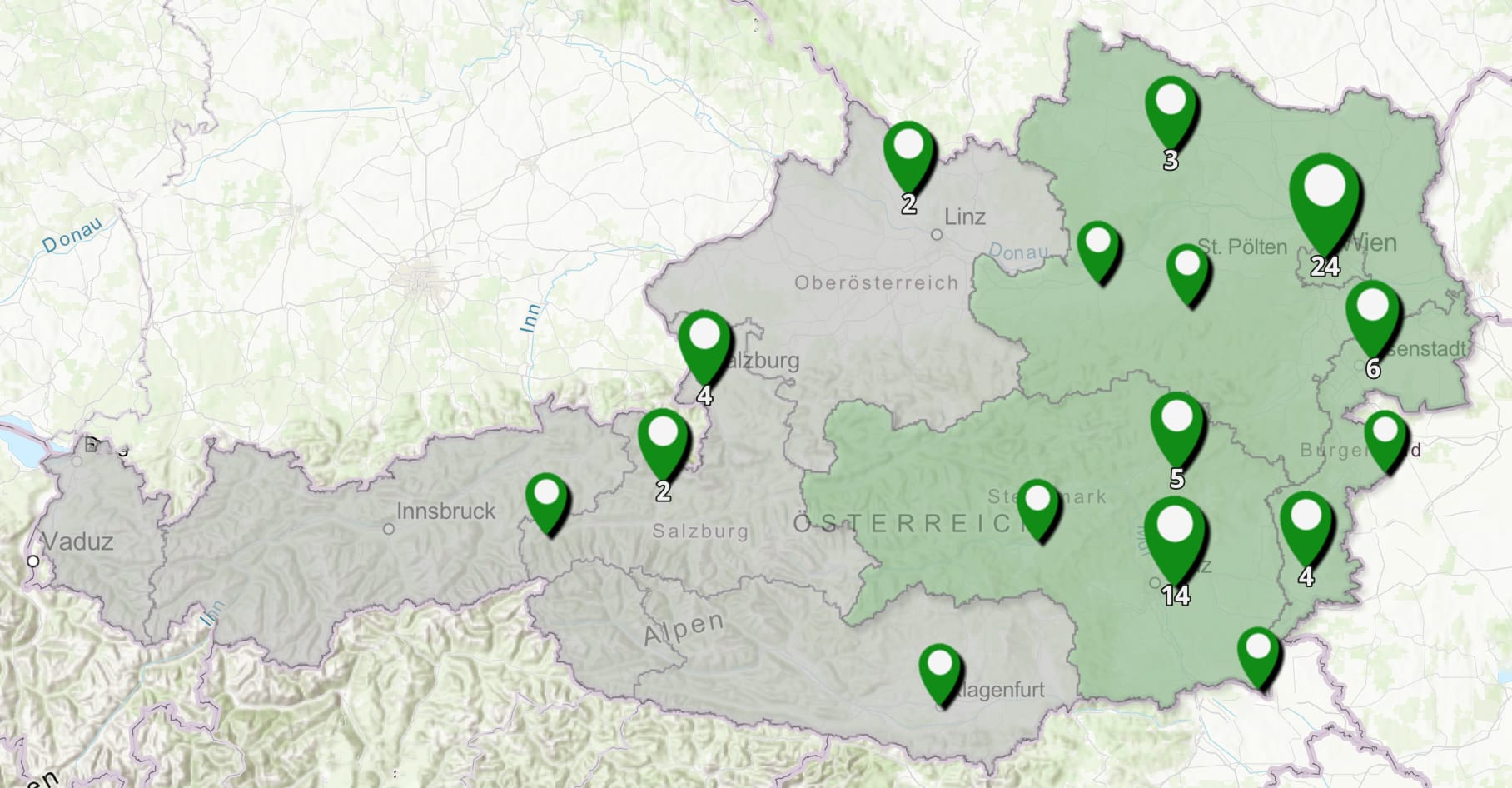SmaChaCo – Smart Charging Community
The SmaChaCo project focuses on connecting two rapidly growing areas: Electric vehicle charging and electricity from energy communities.
Objective of the SmaChaCo project
The aim of SmaChaCo – Smart Charging Community is the decarbonization of energy consumption by establishing intelligent energy communities (EC) through the integration of intelligent and bidirectional charging infrastructure using the example of an apartment building.
Overarching project goals are:
- Development of technical interfaces and optimization solutions for self-consumption on hierarchically ascending levels by using the e-vehicles as flexible and bidirectional storage systems
- Development of cost-optimized charging strategies for users, taking into account grid serviceability at the house connection and the local transformer station by means of load management at building level
Approach and methodology of the SmaChaCo project
Specifically, the following technical solutions are to be developed:
- Optimization algorithms and load control applications
- Creation of a platform architecture with interfaces between vehicle, charging station backend, building energy management and EC billing software
- Integration of smart charging and V2G into existing charging and energy management systems
Graz case study
The roll-out of e-mobility is particularly complex in large-volume residential buildings: On the one hand for organizational and social reasons (decisions depend on the consensus of many individuals, community models are very complex for laypersons) and on the other hand for technical reasons (existing house connection is not designed for large loads from many e-cars). Projects in apartment buildings are therefore associated with great economic risk for providers, meaning that this customer segment (especially in the area of condominiums) is only served sparingly.
The specific case study is an apartment building owned by the non-profit housing association GWS in Graz, where the consortium partner easily already operates charging stations. As part of the project, additional data from the 5 low-voltage distributors, 5 PV systems and approx. 10 sub-meters will be analyzed, evaluated and used for optimization by means of simulations.

